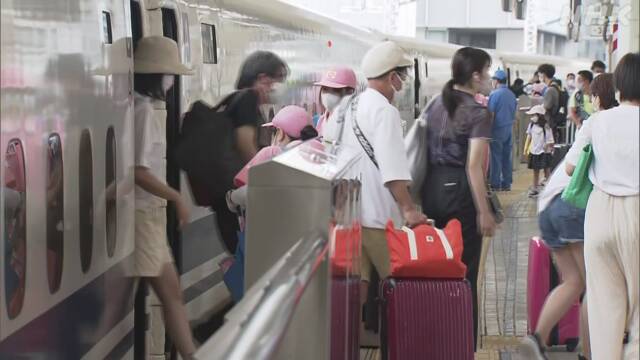For the first time in three years, during the Obon holidays without movement restrictions, the traffic volume on the expressway increased by more than 40% compared to last year, but it is about 10% less than before the spread of the new corona infection. increase.
In addition, although the use of Shinkansen and JR limited express services has more than doubled since last year, which was the second lowest in the past, it is about 60% compared to before the spread of the new corona infection.
According to expressway companies, the average daily traffic volume in major sections nationwide increased by 43% from last year's Obon period, when usage was low, for the seven days from the 10th to the 16th of this month.
On the other hand, it is 11% less than the Obon period three years ago before the spread of the new corona infection.
The number of traffic jams has also increased from last year, with 181 traffic jams of 10 km or longer, compared to 82 last year, and 10 traffic jams of 30 km or longer, which was one last year.
Expressway companies said, ``Because it was the first Obon holiday without movement restrictions in three years, the number of people returning to their hometowns spread and the traffic volume increased. It may not have returned to the previous level."
About 60% of JR companies use Shinkansen and limited express before corona
According to the summaries of JR companies, 6,852,000 people used the Shinkansen and express trains nationwide during the eight days from the 10th to the 17th of this month during the Obon holiday period, and due to the influence of the new corona, 6 prefectures " It has increased more than twice as much as the same period last year when the "Emergency Declaration" was issued.
On the other hand, four years before the spread of infection, the number of users at the same time was 11,075,000, and this year it was only about 60% of that, which was the lowest since 1991 when records were kept. This is the third lowest level since last year.
According to each company, compared to before the spread of infection,
▽ Tokaido Shinkansen was 69%,
▽ Sanyo Shinkansen was 65%,
and heavy rain fell along the lines during this period,
▽ Tohoku Shinkansen was 58%,
▽ Hokkaido Shinkansen was 55 %.
%,
▽Yamagata Shinkansen was sluggish at 52%.
JR companies said, ``Because there were no restrictions on movement this year, although it recovered from last year, the number of infected people was large due to the ``7th wave,'' and the number was severe.

